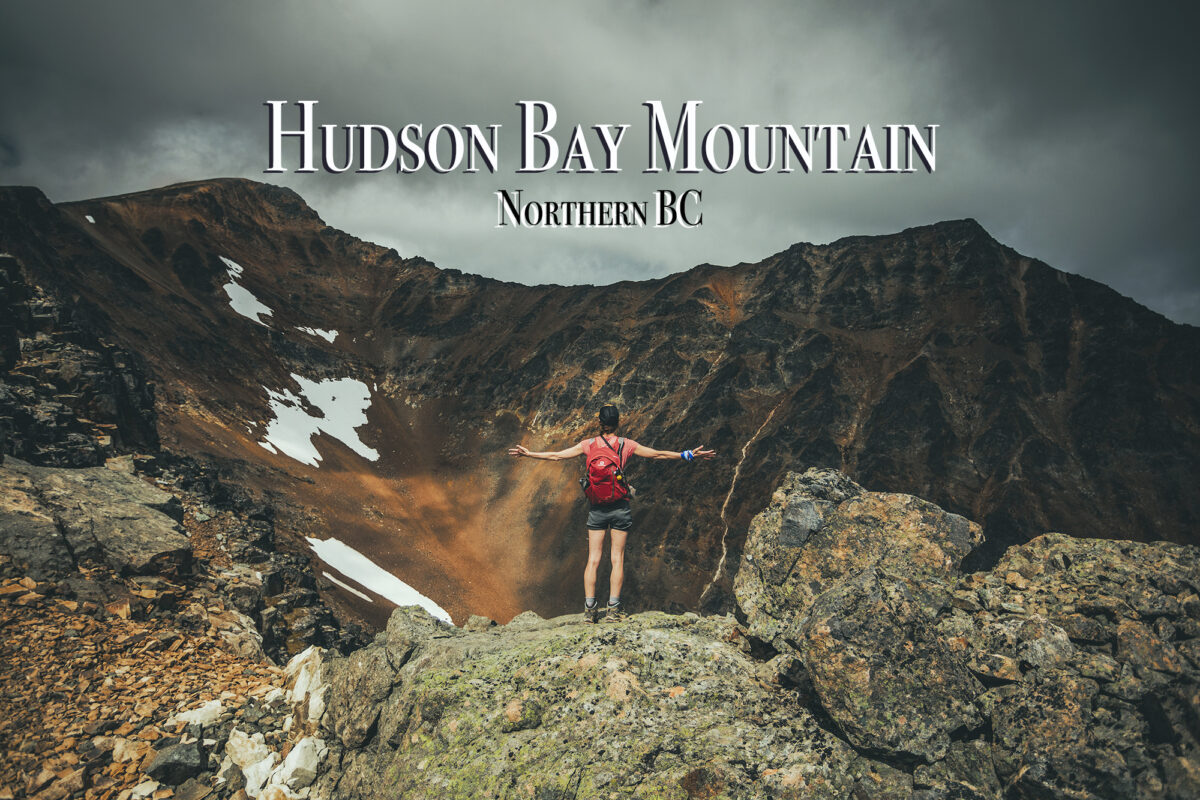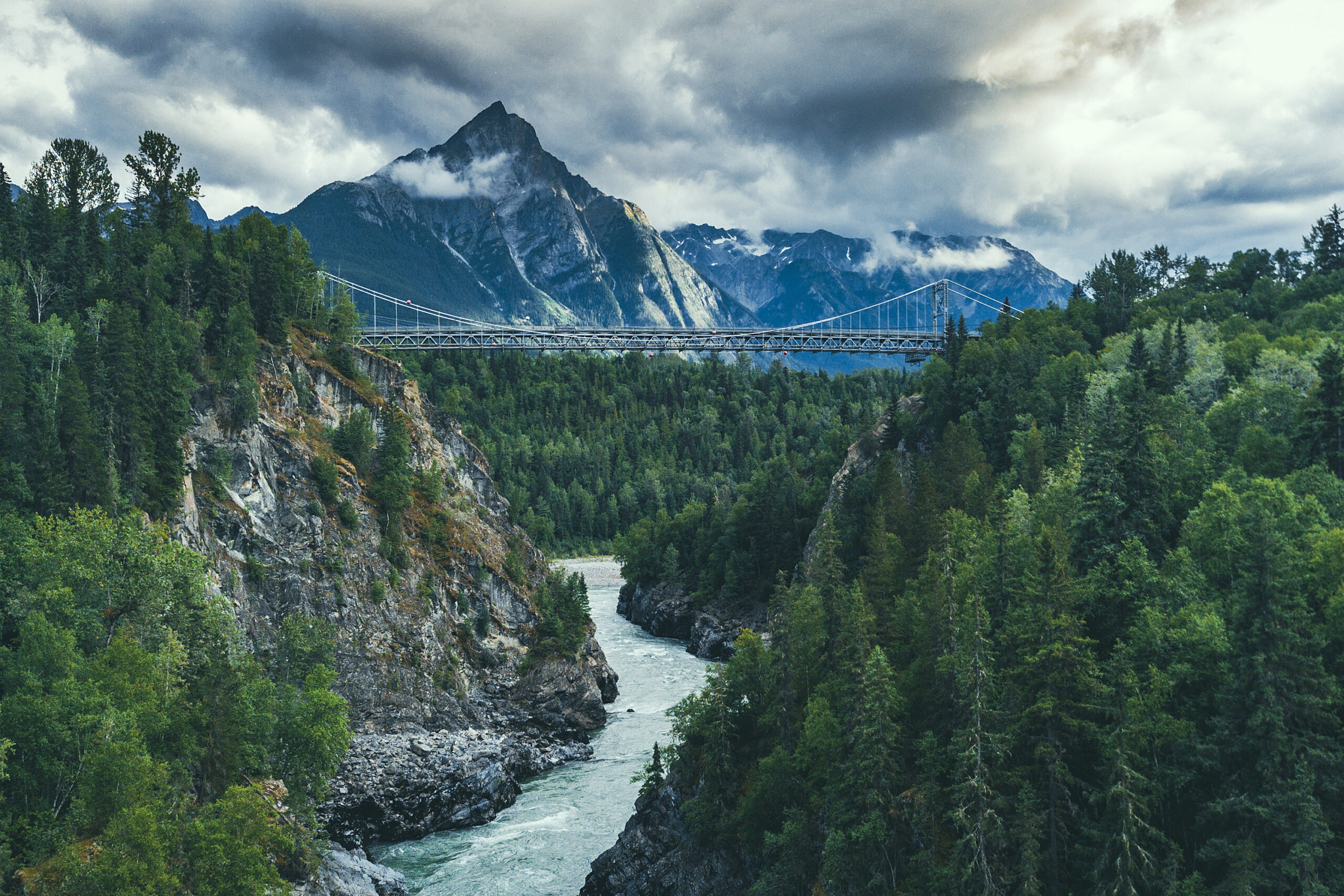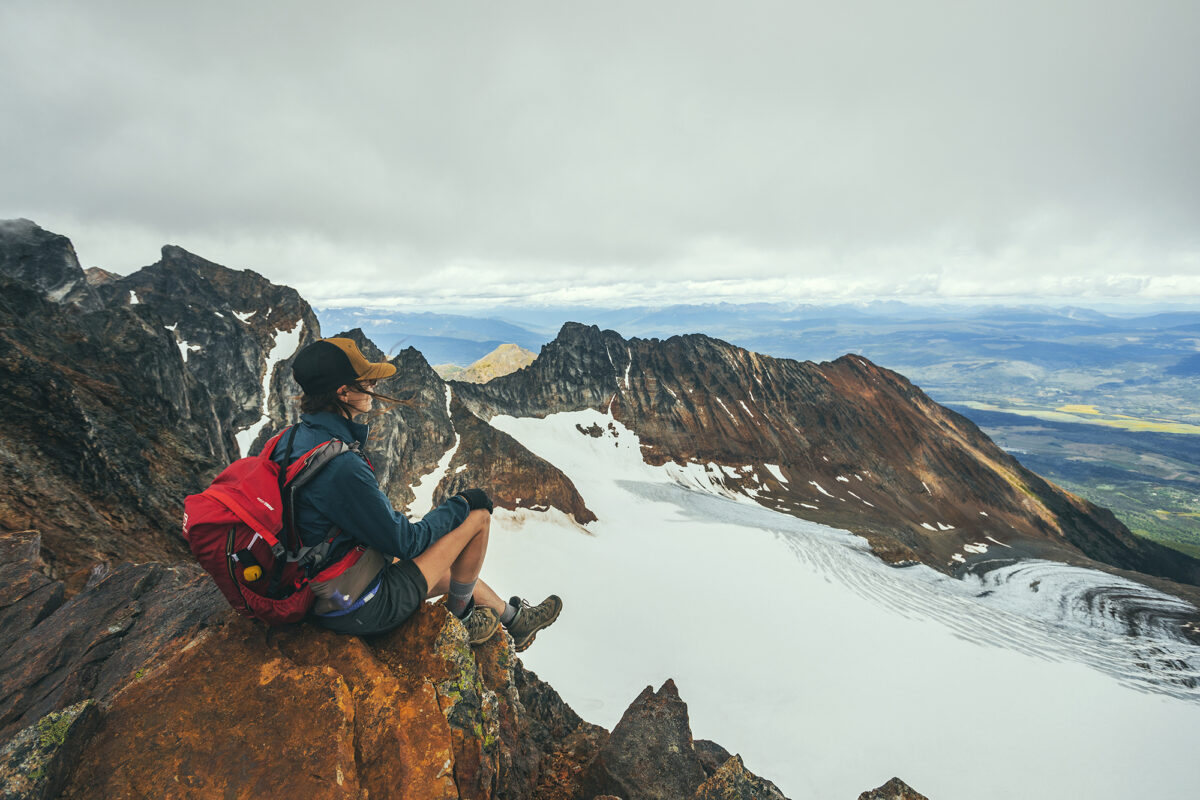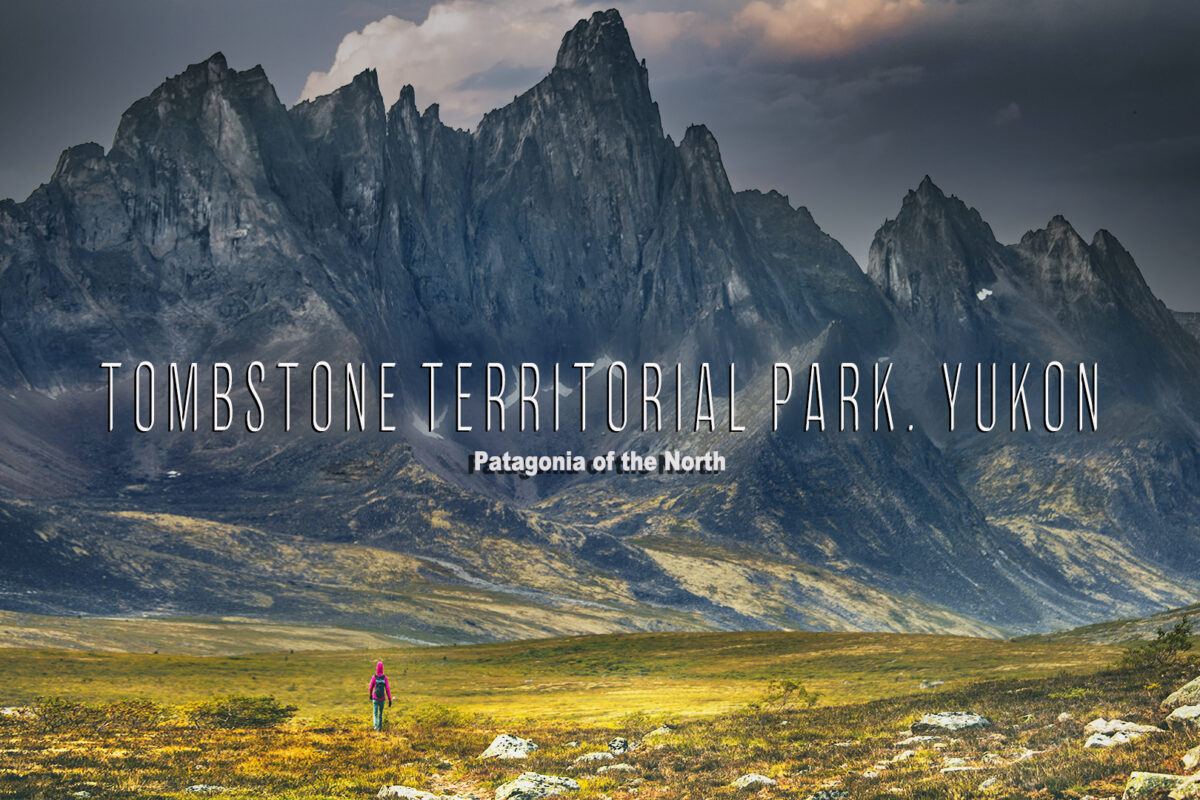Video Recap: Hiking to Crater Lake and Hudson Mountain, near Smithers, BC

Our adventures around the world…


We got up and packed up camp, then headed to Smithers for breakfast and a stroll – We grabbed pastries at Paul’s Bakery and enjoyed them, along with a coffee at the outdoor space behind the Bugwood Coffee stand. Then we took a walk down the three or four blocks along Main St.
Smithers is located on the traditional land of the Wet’suwet’en Yintikh Nation, who live along the Buckley river and Burns Lake.
Smithers has a classic small town vibe of old vs. new: Second-hand bookstore and family-owned butcher shop and bakery, meet new “hipster” stores selling everything clay and linen, a buzzing brewery and an outdoor coffee stand with public piano. It’s a bit of a mixed feeling to witness another old timey town evolving into the same format of “modernity” that has spread in many places. When you’re in one of these newer shops, you could really be in any town in North America, it gets harder to pin-point a town’s identity or original cultural make-up. I guess it’s a good thing that small towns stay alive but it doesn’t feel like the change involves much of the indigenous peoples of the area, who remain on the fringe of the evolution.
Leaving Smithers, we headed out for a quick visit of Twin Falls, two waterfalls that originate from the Kathlyn and Toboggan placiers – one of which we saw from above the day before. The falls are very accessible, with a viewing platform 5 min down the trail, and another viewpoint almost at the base, another 3 minutes further. After a quick picnic, we continued North to the Hazeltons.
The Hazeltons refers to two small towns, on either side of the Hagwilget Canyon. Old Hazelton is located in the Gitanmaxx Band territory. The Old Town is more or less 2 blocks of of pioneer-era Buildings, most of which have been repurposed for modern use but preserved in their former state. Our Airbnb actually happened to be a small laneway house at the back of one such old town building, now a residence & guest house.
Before settling down for the day, we headed to the ‘Ksan historical Village & Mureum. The site is a replica of a traditional Gitxsan village. Gitxsan people have lived at the confluences of Buckley & Skeena river for over 8000 years and the museum is a great showcase of their ancient but still observed traditions.
We visited 3 longhouses, the building where members of one clan, or family, gather to celebrate special occasions and organize potlatches.
Each house displayed items of every day life, including Bentwood boxes, made by folding Cedar sheets after steaming them to make them pliable. Traditionally, most common items where made of cedar, including some clothing. Other material used included copper, which made the shield of the chief, a well as was used for helmets and decorating or dyeing garments. Copper isn’t native to the area but was a abundant resource of the Nass Valley, home of the Nisga’a people, with which the Gitxsan people traded often.
The village also displayed many totem poles and we had the opportunity to listen to a resident Carver, who explained his process in carving a pole, from inspiration, to design to the actual carving.
After the Museum, we headed to our airbnb to unpack and have a snack. It was probably one of the coziest, most well set-up place we’ve stayed at!
There was still lots of dailight time ahead of us so we drove to the Hagwilget Canyon & Bridge to check out what the Northern BC guide referred to as “one of the most photographed places in Canada” and also one of the highest suspension bridge in the country, hanging 262 feet above the river. It is surprisingly “un-secure” as the railing is barely waist-high and it wouldn’t take much to jump or fall over. I’m not usually afraid of heights but I felt much more comfortable walking down the center of the bridge (on the road) rather than the side.
We managed to find a trail descending halfway into the Canyon for a different view of the bridge and the river below.
Stegyawden, a Tsimshian name meaning, ‘painted goat’, is also known as Hagwilget Peak or the Roche de Boule mountain range. It’s a prominent mountain in the area and its peak can be seen from many locations.
As we walked back to the car, a man who we had seen walking along the river bank earlier, approached us and gave us an eagle feather from several he had collected at the bottom of the canyon. He offered it as he wished us welcome to his village and an enjoyable stay.
We made one more stop before calling it a day, by driving to Kispiox, 10km north of Hazelton, to see the totem poles displayed in the town. They stand where there was once the site of a Telegraph building post. At some point, settlers were trying to build a telegraph line to Asia, but the project was stopped before it was completed and the site abandoned. The miles of wires left behind became a source of supply for the indigenous peoples nearby.
We had a lovely evening at the airbnb, making use of the well equipped kitchen weirdly though I didn’t sleep very well. I got up at ن 3am and as I went to the bathroom, realized the toilet seat was up, which was weird as I was the last one to use the bathroom and I knew i hadn’t left it that way.
I kinda rattled me as I couldn’t make sense of how it ended up that way my two explanations, after all plausible ones were exhausted:
an animal spirit who entered the bathroom in the form of a beetle, which I found on the floor and probably came tangled in our tent when we hang it in the shower to dry – OR – a ghost from old-timey old town. Either way, some cheeky immaterial being clearly played a prank on me and I couldn’t fall back asleep for 1.5 hour after that.
We left Hazelton and headed south west towards Terrace. The drive was pretty uneventful but scenic in places, as we drove along the Skeena River. We made a quick stop in Usk, to see the small ferry crossing, built in 1913.
Terrace is a bigger town with strip malls, we didn’t stop and kept going, this time aiming North on Highway 113, aka the Nisga’a highway. After a few kilometres of road lined with houses, trees took over and it was more or less nothing but dense forest on either side, for the rest of the way.
We made a stop at Kitsumkalum lake for lunch. The lake is indicated as a provincial park on BRMB, but there wasn’t any sign pointing to the entrance. We saw an unmarked road going down near where the entrance was indicated on the map, so we drove down it and sure enough it took us to the lakeside. The site is labeled as a “user-maintained” so it was pretty rudimentary. The road was very pot-holed and for once, I didn’t even want to take a look at the outhouse.
We kept driving until we started seeing signs for the Nisga’a Nation auto-tour, which indicates various points of interest in and around the Nisga’a Lava flow.
We first stopped at the drowned forest, where the stream of the Treax river rushes through the trees, covering the ground around them (hence the name “drowned”).
We stopped at Lava lake, then at a couple of scenic water falls along the way. Eventually the trees disappeared, instead replaced by the dramatic landscapes of the lava flow.
Less than 300 years ago, a volcano in the Nass mountain range, the Treax Cone, erupted violently and the lava from the eruption covered a large area of the valley, destroying several villages and taking the life of an estimated 2000 indigenous people..
The solidified lava that remains today has high cultural significance for the people of the Nisga’a nation, and only a few marked trails allow venturing around the rock features.
Due to Covid, all tourist services and attractions were closed, including the museum, the hot springs, and any cultural event that would normally be held and open to visitors.
I had planned for us to spend the next day driving out to Gingolx, the furthest village at the end of the Nass valley, and making stops along the way. But without access to any of the afore-mentioned activities, it was ultimately only a 2-hour drive and back.
It was 4:30pm when we got to the small visitor center, so we decided to take the drive out to Gingolx, if only for the scenery along the way, and come back to spend the night at the Nisgala Memorial Lava Bed Park Campground which was still open for use.
There are four main villages of the Nisga’a Nation along Nass Road, which travels paralell to the Nass River. Gitlaxt’aamiks is the eastern most, more or less located at the intersection of the Nisga’a Highway and Nass Road. Next is Gitwinksihlkw, with its scenic suspension bridge, Lax̱g̱altsʼap is home to the Nisga’a Museum. Ging̱olx is the last village, at the mouth of the Nass River.
We stopped at the Gitwinksihlkw suspension bridge then later down the road saw a bunch of eagles perched on rocks and stumps by the river. They looked young, as not all of them had white heads and their feathers looked pretty shaggy (we had binoculars to look at them).
Eventually we made it to Gingolx, which sits at the very end of the road and on the scenic shores the river mouth. We had a snack then made our way back to the campground for the night.

In the summer of 2021, after 2 years of working through a very challenging project, not to mention a world-wide pandemic, I was able to take 2 months off work. Yukon had been on our list of places to travel to for a bit, and with flying and travel restrictions still in place, it seemed like the right opportunity to take this trip.
I kept a journal as we drove through Western Northern BC, into the Yukon, up to Tombstone Territorial Park, back down to Kluane National Park, then down through Eastern Northern BC before returning to Vancouver. The next few posts are a transcript of that journal, complemented by the 1000s pictures we took along the way…
That summer, BC experienced a gnarly heatwave (due to a meteorological “heat dome”), followed by dramatic wildfires spreading in all areas around the lower mainland. When we left Vancouver around 10am on Aug 2nd, I was a bit worried about the wildfires in the Okanagan, and what that would look like for our itinerary. Looking at the Emergency BC App and the BC Wildfire Map, I could see that the shortest route, through the Fraser Canyon, would take us right through the main evacuation alert/order zones. Not Ideal.
So instead we took a slight detour, following highway 5 through Merritt, Kamloops, and then rejoining Highway 97 via route 24. We also decided to drive further on that first day than originally planned, as the air quality at Lac La Hache, where we initially planned to stop, was not the greatest.
We drove an extra 2,5 hours past Lac La hache and landed at Chubb Lake, a small Recreation Site off the highway past Quesnel, with campsites on the water. It was a perfect spot for our first night on the road!
Although it hadn’t rained in Vancouver for weeks, the weather forecast was calling for a thunderstorm. We did get some brief, heavy rain falls on the road between Williams lake and Quernel, but no rain at the lake, only a bit of distant lightning & thunder.
That first night gave us a taste of the bug situation for a good portion of the trip. Mosquitos at the lake where quite intense, especially with being right on the water. Thankfully, one of the main pieces of gear that we purchased for this trip was a net shelter, big enough to fit over most of the picnic tables at campgrounds and keep the mosquitoes away. It turned out to be a game changer for our camping experience, acting as both a bug shield and rain cover (with the added help of a big tarp), and ultimately creating that homey feeling every night, after we’d set up everything on the picnic table.
We’re not used to packing this much for a trip, generally limited in weight when flying somewhere, or if we’re going backcountry camping. But since we were driving, we were able to bring a lot more along, including the extra comfort items such as a table (we ended up not using it since all campgrounds had a picnic table) chairs, shelter and extra tarps, boxes of food, two-burner cooking stove, etc…. We even brought an extra tent (didn’t end up using it) as well as a back up sleeping mat (which we did use when my mat got punctured).
After packing up camp, we drove to Prince George and stopped at our first (of many) local bakery for pastries, at a place called Pastry Chef Bakery. Then we got back on the road for another day of driving. We stopped at Beaumont Provincial Park for lunch, and enjoyed a picnic in the shade with view of Fraser Lake.
After a few more hours of driving, we arrived near Smithers, and set up camp at the Tyhee lake Campground 10 min south of town. Since we were one day ahead of schedule, we decided to stay two nights.
Thanks to recent rain, the fire ban had been lifted for the area, so we were able to enjoy a nice campfire that night, always a big part of the camping ambiance.
Since we set up camp for 2 nights at Tyhee Lake, we were able to take a day off driving and go out for a hike. Our friend Adele had mentioned Crater lake as a good hike, so we decided to go for it.
The trail starts from the Hudson Bay Mountain resort, and thanks to the road taking us a good way up in elevation, we reached alpine meadows within just a few minutes of starting the hike.
From there, we had views all the way to the top. In only took us about 40 min to reach the lake, so we kept going right away, along the ridge.
From the top of that first section, we found ourselves overlooking a steep chute and couloir – probably be a great ski objective for more adventurous backcountry skiers.
After that, the trail was a bit more faint, traveling over rocks and scree, but it was easy to aim for the next summit. This time we looked over the edge to an impressive glacier.
We saw that there was one more climb possible to the top of a prominence that from afar, looked like a dorsal fin, but clouds were coming in and the wind was strong so we decided to head back down. We stopped at the lake for a quick break before heading down through the meadow, back to the car.
On the way back to camp we stopped in Smithers to grab some beers at the local brewery and give the small “downtown” strip a first look.
There were hot showers at the campground, which we much appreciated after after having a good day out. It rained pretty strong that night but it had stopped by morning so it wasn’t too much of a pain to pack everything up, even with both tents being wet.

Here is a 25 minute video of our backcountry adventure around Tombstone Territorial Park, YT.
Thank you for watching!